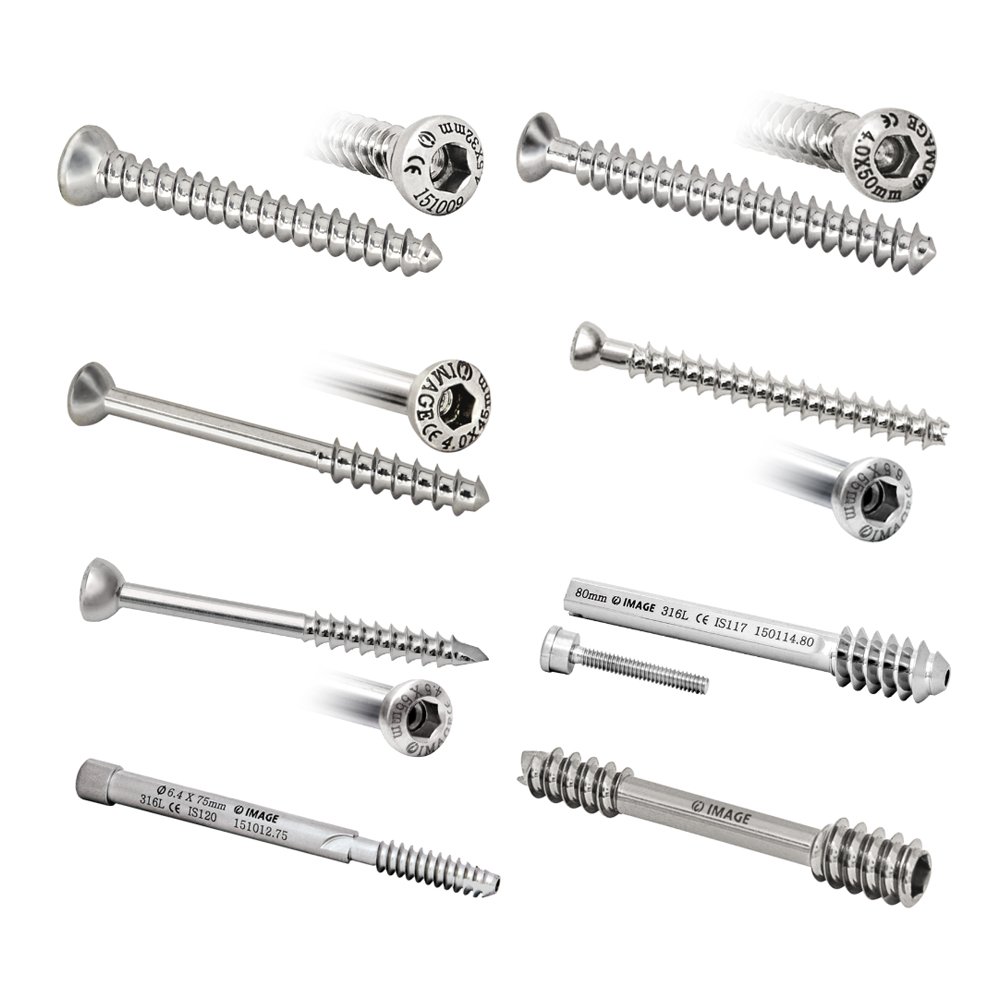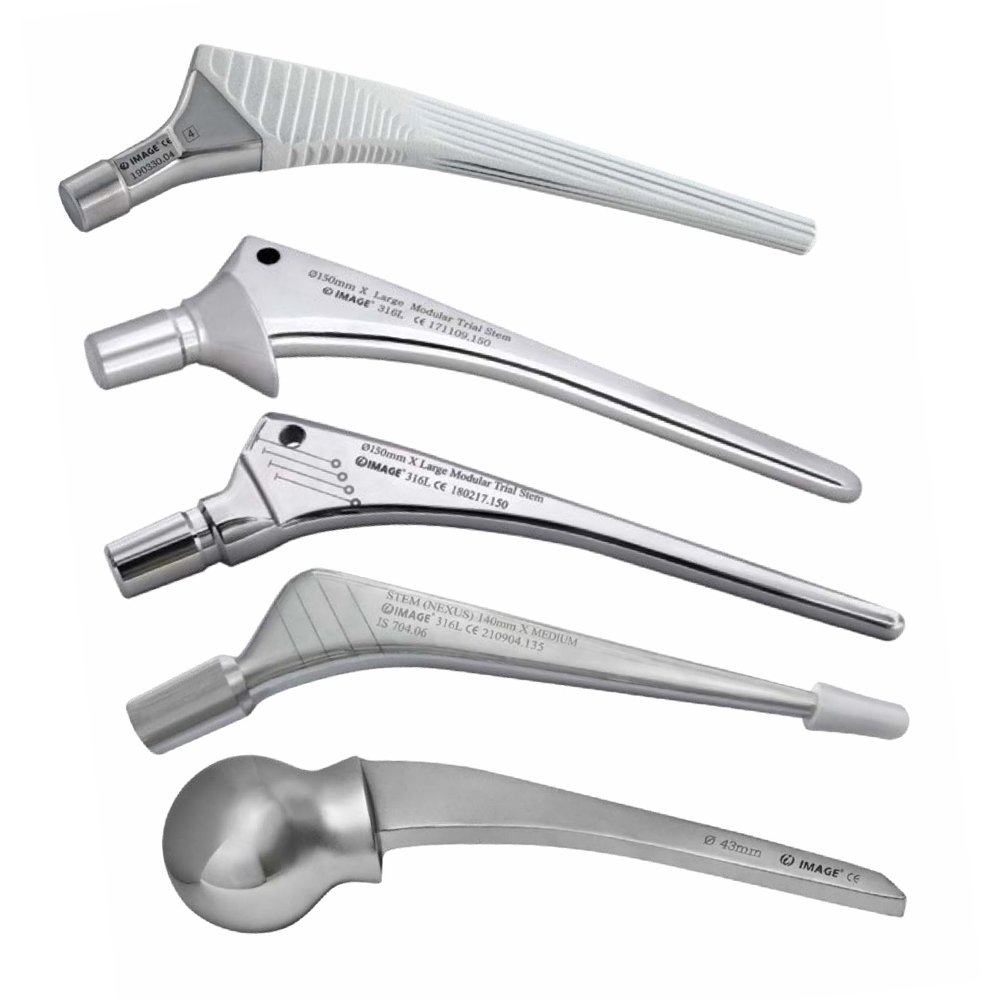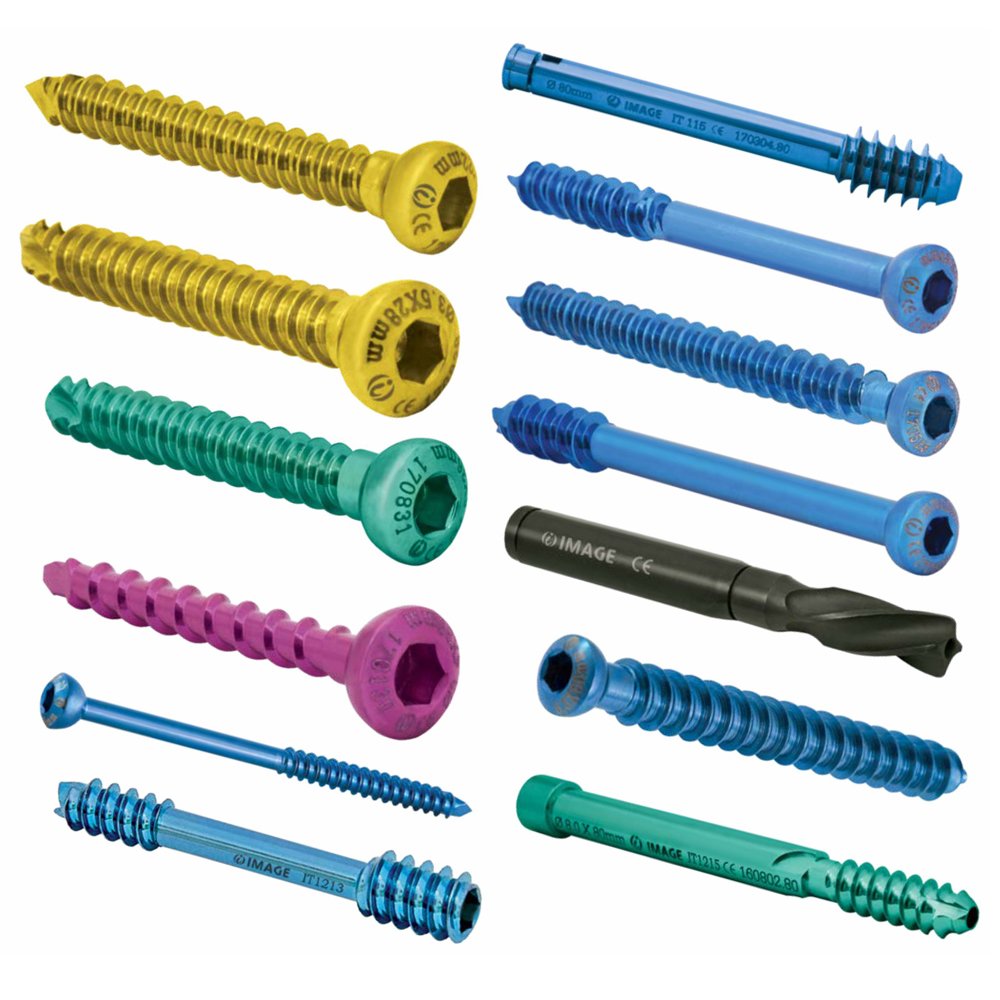Purpose and Function:
Locking bone screws are designed to address challenges associated with traditional screws, especially in osteoporotic or comminuted fractures where there may be compromised bone quality.
The primary function is to create a fixed-angle construct by securely engaging with a locking plate, offering increased stability and minimizing the risk of screw pullout.
Mechanism:
Unlike conventional screws, locking screws do not rely solely on bone purchase for stability. Instead, they secure directly into a locking plate through threaded holes, creating a stable and fixed-angle connection.
Locking Plates:
Locking screws are often used in conjunction with locking plates, which have specialized holes to accommodate these screws. The combination of locking screws and plates forms a stable construct that provides robust fixation.
Thread Design and Configuration:
Locking screws have a threaded design that engages with the corresponding threads in the locking plate. This threaded interface enhances stability and prevents loosening over time.
Some locking screws have variable thread pitches or other design features to optimize purchase in different bone densities and anatomical locations.
Indications:
Locking bone screws are commonly used in challenging orthopedic scenarios, such as fractures in osteoporotic bones, periarticular fractures, and cases where a fixed-angle construct is essential for stability.
Materials:
Similar to traditional orthopedic screws, locking screws are typically made from biocompatible materials such as titanium or stainless steel to minimize the risk of adverse reactions within the body.
Surgical Technique:
The surgical technique for using locking bone screws involves careful pre-drilling of holes in the bone and securing the screws into the corresponding holes in the locking plate. This technique requires precision to achieve optimal alignment and stability.
Applications:
Locking bone screws find applications in various orthopedic surgeries, including fracture fixation, osteotomies, and reconstructive procedures. They are particularly valuable in situations where traditional screws may not provide adequate stability.
Postoperative Care:
After the surgical placement of locking bone screws and plates, patients may undergo rehabilitation and physical therapy to regain strength, mobility, and function. Regular follow-up appointments monitor the healing process and the stability of the fixation.






Reviews
There are no reviews yet.